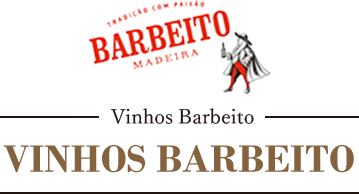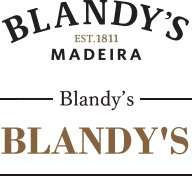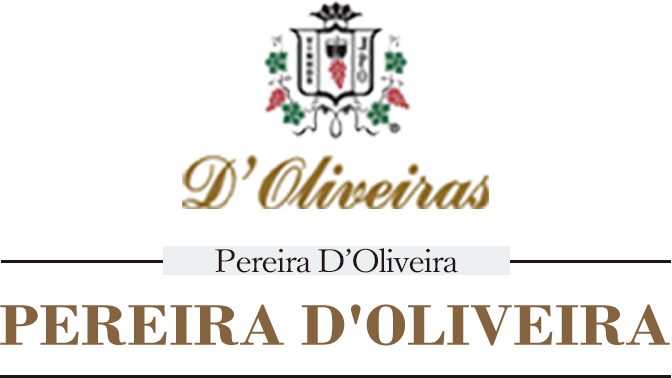Grapes & Producers
of Madeira Wine
- TOP
- Grapes & Producers of Madeira Wine
Madeira Wine comes in different flavours, characters and/or ages, from 3 years old Tinta Negra to so-called old vintage with over 100 years made from white grape variety.
Tinta Negra is a red grape variety used for Madeira Wine. This grape variety is an all-rounder, meaning that the wine made from Tinta Nagra can be any of 4 styles, from dry to sweet. White grape varieties, on the other hand, have their own flavour profile which are different from each other. For example, the variety called Sercial makes dry Madeira Wine, Verdelho makes semi-dry wine, Boal/Bual makes semi-sweet wine and Malvasia/Malmsey makes sweet wine.
It could be a fun idea to get a wine flight with different grapes used, different aging periods, and/or from different producers to test your palate, or quite simply to see which one your favourite is.
-
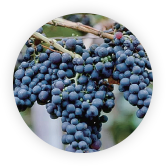
Tinta Negra
The only red grape variety introduced into Madeira Island in the 19th century.
Grape berry is small, but it’s very strong against surrounding conditions and circumstances and has thick skin.
It’s a highly adaptable variety and survived easily in the island since it was first brought in.
It’s an all-round player that can create dry, semi-dry, semi-sweet and sweet tastes for wine. -
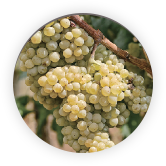
Sercial
A white grape variety; strong against grapes’ enemies and diseases. What differentiate this variety are strong acids and astringents. It creates dry wine.
-
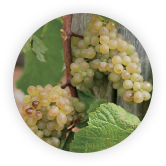
Verdelho
This variety is said to be Portuguese local variety.
It used to be the biggest cultivation. It creates semi-dry wine.
In recent years, this variety is used for table wines as well as Madeira Wine. -
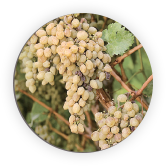
Boal(Bual)
White grape variety; one of the local and original varieties in mainland Portugal. Generous and robust, and balance between acid and sweetness is impeccable. Due to the limited production, the price of this grape tends to be higher.
It creates semi-sweet wine.
Bual is the English name of this variety.
-
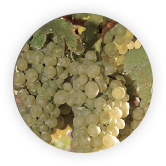
Malvasia(Malmsey)
First-ever planted white grape variety in Madeira Island, which was originally grown in Crete, Greece.
It creates sweet wine, and Madeira Wine made from this variety has the richest and thickest taste.
Malmsey is the English name of this variety. -
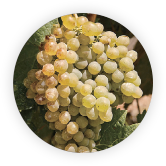
Terrantez
One of the endangered and vulnerable varieties. In Portuguese, they praise this variety in a rhyming ditty saying;
‘Se tiveres uvas Terrantez, não as comas nem as dês, pois para o vinho Deus as fez’
which means, ‘Terrantez grapes, neither eat or give them away, for God made them to produce wine’. That’s how sensitive and delicious the wine from this variety is.
The taste and sweetness vary, like semi-dry and semi-sweet, depending on the wine producer.
-
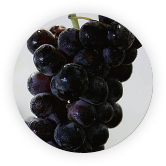
Bastardo
This is another endangered and vulnerable variety, and is a red grape. However, that is not the case in mainland Portugal as it’s widely grown there, and it’s even used for Port Wine which is another Portuguese fortified wine. For Madeira Wine, this variety is only used for old vintage wines.
The grape itself has a sweet taste, but the wine made out of it has semi-dry taste. -
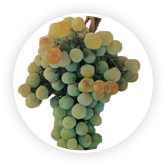
Moscatel
An endangered and vulnerable variety of white grape. The fruit of this variety is better known as Muscat of Alexandria or Moscatel de Quinta. The wine made from this variety is a bit too expensive to be considered as table wine, and thus, it wasn’t used to produce Madeira Wine either. However, the flavour is truly appreciated in old vintage wines.
Indication of Grape Variety on the Bottles
Madeira Wine institute (IBVAM) regulates Madeira Wine and it stipulates that grape variety can be indicated and written on the bottle if the content is at least 85% from that variety. However, in reality nowadays, most of the wineries produce 100% varietal, meaning that a wine is produced only from one variety.
Established in 1946 by Mario Barbeito, Vinhos Barbeito is one of the leading wineries in Madeira Island, with its rare family-run operation.
The winery keeps the traditional winemaking, but on the other hand, various innovations in several different fields have been implemented since 1991 when our company, Kinoshita International, acquired the capital (50%) in Vinhos Barbeito,
led by Ricardo Freitas, current winemaker and president of the company.
Barbeito’s characteristics can’t be talked without mentioning its sharp acid. In persistent search for the best balance in wine, they know the careful attention to detail is the key at any stage, such as area(s) of grape production, harvest timing, vinification, aging and blend, and they never stopped the pursuit of the best. Their sensitive and elegant wine style received an accolade with the description ‘Lafite in Madeira’ from world-famous wine writer Jancis Robinson.

Tradition, Passion and Inheritance
- - building close relationships and communication with contract farmers giving instructions on cultivation, for the purpose of gaining high-quality grapes
- - developing cutting-edge ‘estufa’ (system for heat-aging) for the forced heat-aging process ‘estufagem’ used for 3-year-old wines
- - use of dome-shaped ‘canteiro warehouse’ which was created and completed after years of research and development, for the natural heat-aging process called ‘canteiro’ using the solar heat
- - 100% use of single variety for the aged varietals and the prohibition of caramels (colourant)
Characteristics of Madeira Wine
The characteristics of grape varieties and the timing of fortification determine the dryness and sweetness, and overall flavour. Base wines then undergo the process of aging, either with ‘canteiro’ method where wine casks are put in the attic so that solar heat slowly warms the wine up, or with ‘estufatem’ method where wine inside tank or vats is artificially heated quickly and for a short period of time, before they are bottled.

New Winery Equipped with Cutting-edge Facilities
In November 2008, Vinhos Barbeito has completed the new winery project with up-to-the-minute facilities installed. In this winery, they continue using the latest estufas (i.e. system with big tanks to heat up wines artificially) which have external heating system (jacket method) so that wines inside the tank would not get burnt and its heat temperature is closely monitored and controlled on computer system. In addition, Vinhos Barbeito was the first in the island to introduce ‘robotic lagar’, which reconstructed the crush by stepping optimal for extracting juice element from grape berries. This new tactic successfully led the company to squeeze and gain the grape juice effectively.Innovation and challenges of Vinhos Barbeito doesn’t stop there just yet; the company also built a dome-shaped ‘canteiro’ warehouse (warehouse for aging) which was meticulously calculated and designed to improve the thermal absorption efficiency for aging Madeira Wine. Bottling used to be done manually, but this was also changed to line work, which speeds up the process as well as stabilising the production environment.
In addition to that, anyone who visit the winery can enjoy the time there fully thanks to the effort from the winery to entertain the visitors such as showing the grapes which are actually used for tasting and for the bottled products, which help the visitors’ understanding about their wines.

Blandy’s is a family-owned wine producer company founded in 1811 by John Blandy. It established its position in British market as a leading Madeira Wine company and has been producing fine wines over 2 centuries. Current CEO, Chris Blandy is 7th generation who took over the operation of the long-standing company in his 30s.
Their wines are characterised by its rich style with firm body. Quality of wines were well-recognised in a series of wine competitions in the world, and their winemaker, Francisco Albuquerque, has been selected as ‘fortified winemaker of the year’ for 3 successive years since 2008 at International Wine Challenge. With sweetness and round acid as results of fermentation period and conditions of aging location, their wines can be described as ‘innovative Madeira Wine and yet tradition is also there’.
Blandy’s is one of the brands by Madeira Wine Company, together with other brands such as Cossart Gordon, Leacock’s and Miles.
D’Oliveira was founded in 1850 by João Pereira D’Oliveira. The company owns vineyards growing Sercial, Verdelho and Tinta Negra, and also purchases grapes from approximately 40 grape growers in the island to produce their wines.
D’Oliveira owns and keeps a vast range of vintage wines that other producers don’t, which includes Verdelho from their own foundation year, 1850, even old vintage wines of rare grape varieties such as Moscatel, Terrantez and Bastardo.
Not only vintage wines, D’Oliveira certainly have a good collection of their products with 4 flavour types (dry, semi-dry, semi-sweet and sweet) for 5, 10 and 15 years. The producer cherishes and observes their long-lasting tradition.
Madeira Wine institute (Institute of Wine, Embroidery and Handicraft of Madeira; Instituto do Vinho, do Bordado e do Artesanato da Madeira, P. I. – IVBAM) is the official organisation that supervise and control Madeira Wine. It takes responsibilities and carries out activities to promote Madeira Wine, and also functions as a certifying body. All the producers who wish to produce and sell their Madeira Wines are obliged to gain the certification issued by IVBAM prior to production and sale.
At the current moment, there are 8 Madeira Wine producers. Out of those 8, 7 producers export their products to Japan. All the producers are listed below. How many of them have you heard of?
Exporting to Japan are:
- Henriques & Henriques, Vinhos S.A.
- H.M. Borges, Sucrs, Lda.
- J.Faria & Filhos, Lda.
- Justino’s –Madeira Wines, S.A.
- Madeira Wine Company, S.A – Blandy’s
- Pereira D’Oliveira (Vinhos), Lda.
- Vinhos Barbeito (Madeira), Lda.
* Alphabetical order
Other producer is:
- CAF – Cooperativa Agrícola do Funchal, Crl






